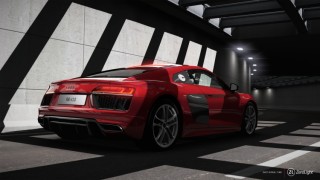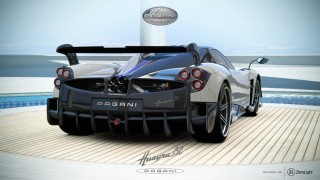ZeroLight is disrupting the standardized and sometimes monotonous car-buying process for consumers and dealers alike with virtual reality technology.
The omni-channel visualization platform is driving new sales and marketing for the auto industry by efficiently engaging customers through real-time 3D solutions.
Earlier this year at shows like CES, NVIDIA’s GPU Technology Conference, and the VR Summit, the U.K.-based startup unveiled their suite of projects to support the Audi City dealerships initiative. The German automaker’s next-generation virtual showrooms are designed to offer customers tailored capability like reimagining colors, schemes and specs during the car-buying process.

Joseph Artgole, a marketing executive for ZeroLight, told [a]listdaily that the “dealership in a briefcase” model will turn into the modern way of selling cars. The new tool serves to be a big boon as auto sales are already on a record pace.
“The Audi activation received great reception in terms of how you can actually go in and explore the car, by putting your face through the actual model, almost like an X-ray, and exploring in every way, and even under the hood. You can see every single element of the car that you wouldn’t be able to normally experience if you had it sitting in front of you.”
The VR concept also cuts costs for dealerships who spend endless amounts of cash on showroom space. According to Bloomberg, U.S. dealers spend $2.75 billion annually on interest to keep new vehicles on their lots.
Marcus Kühne, the project lead for Audi’s VR experience and immersive technologies, says the collaboration has “led to the creation of one of the most sophisticated and intuitive digital automotive retail solutions in the world.”
ZeroLight has also worked with car brands like Italian bespoke luxury car manufacturer Pagani for its $1.6 million Huayra model. Pagani makes 40-to-50 cars a year, and has just 20 showrooms to flaunt it. Using VR to showcase extremely high-end cars that are low on production is crucial for raising brand awareness, not to mention demand.
“What you’re seeing at the moment is a huge shift in automotive retail. Automotive is an industry in particular that hasn’t really evolved as fast as the other industries. Technology is coming in and changing everything, and really causing a real revolution,” says Artgole. “You have all of these manufactures coming in and taking up the opportunities to control the cost of floor space by implementing things like the 4K UltraHD screens and VR headsets solution.”
 VR also offers an extra level of immersion and engagement while giving the customer a compelling experience that leads to increased sales and higher specification purchases. It’s a modern way of buying and selling cars without the prototypical salesman-like approach.
VR also offers an extra level of immersion and engagement while giving the customer a compelling experience that leads to increased sales and higher specification purchases. It’s a modern way of buying and selling cars without the prototypical salesman-like approach.
Naturally, a big uptick in VR and AR activations has already arrived—specifically with Volvo’s partnership with Microsoft HoloLens. BMW also announced earlier this month that it’s using HTC Vive headsets and mixed reality to help develop new models. Other forward-thinking brands like Lexus, Nissan, Toyota, Fiat Chrysler and Ford are furthering their footprints and testing the waters from Brazil to Berlin, using VR to sell cars before you even try to take Miss Daisy out for a spin.
The prospective storm lead GP Bullhound, one of Europe’s leading technology investment banks, to bill ZeroLight as a company that displays the potential to become a $1 billion business.
“Reach and connecting with the customer globally is key. If you want to see the exact configuration of a car, then your best bet is to have technology that gives you access to every single configuration possible,” Artgole says. “You’re seeing dealership influence decrease because people are doing their research on the Internet. Now they can use their VR headset, go into the car, move around, and use 4K demonstrations instead of reading or viewing someone else’s experience.”
Follow Manouk Akopyan on Twitter @Manouk_Akopyan

